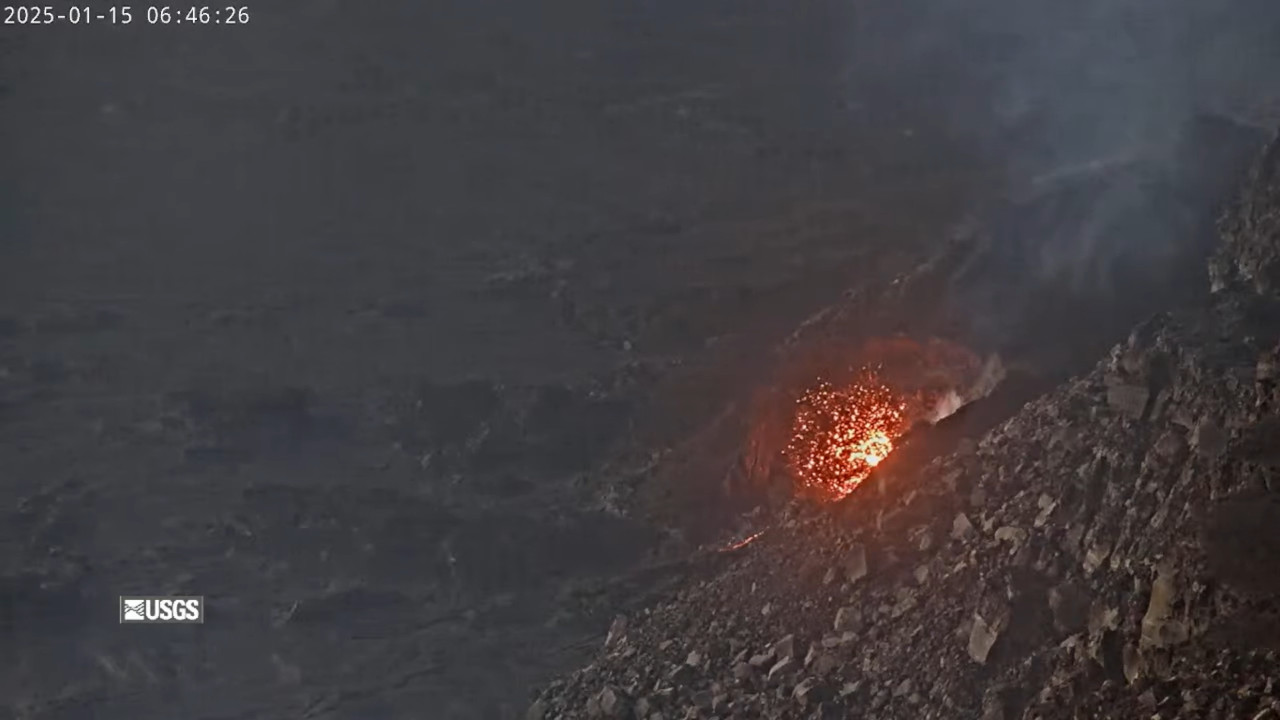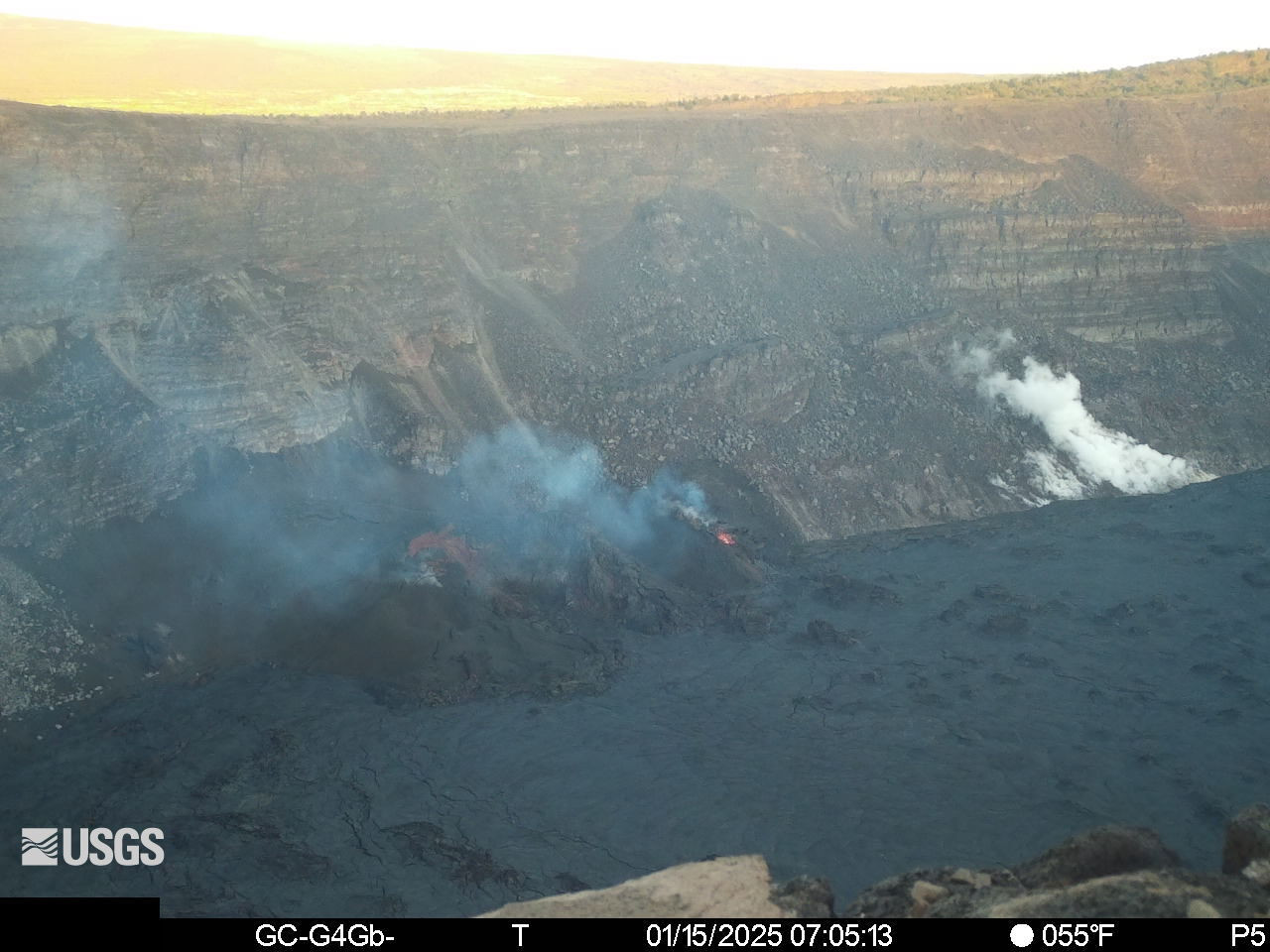(BIVN) – Wednesday morning at Kīlauea volcano began with constant lava spattering within the vents at the summit caldera.
The official word on whether or not the eruption is paused will come from the USGS Hawaiian Volcano Observatory. UPDATE: The USGS HVO reported this morning that Kīlauea “appears to have entered its forth eruptive episode this morning at about 9:15 a.m. H.S.T. with a small lava flow exiting the north vent, following low-level continuous lava spattering that started around 5:40 a.m. H.S.T. from the same vent.”
In Tuesday’s update, scientists noted that there were “three instances of brief, localized subsidence on the floor of Halema‘uma‘u crater within Kaluapele — the volcano’s summit caldera — in the location of one of the vents from the first day of the eruption,” suggesting that “the magma column feeding the eruption has withdrawn deeper”. However, continued glow from the northern eruptive vent at that time indicated that lava was still close to the surface.
Today’s lava spattering is further proof that the magma has not retreated far.
UPDATE – (9:45 a.m.) – From the Wednesday report by the USGS HVO:
Summit Instrumental Observations: Seismicity in the summit region remains low, with only 5 small earthquakes (below M2.0) detected in the past 24 hours. Seismic tremor remains near background levels, indicative of minimal activity. Summit tiltmeters have been tracking gradual inflation over the past day. The most recently measured sulfur dioxide (SO2) emission rate was approximately 560 tonnes per day yesterday on Monday, January 14. Though significantly lower than rates measured during more energetic eruptive activity, this value still represents above-background SO2 emissions, and the resulting hazard will be affected by wind conditions (see Hazards section below).
Summit Eruption Observations: Activity stable over the past 24 hours, with minor degassing across the crater floor and at the north and main vent. Overnight webcam views showed continued glow from the northern eruptive vent, with minimal to no glow from the southern eruptive vent. Since about 5:40 a.m. H.S.T. this morning, there has been low-level continuous lava spattering from the north vent, which culminated in a lava flow exiting the north vent at about 9:15 a.m. H.S.T.
Rift Zone Observations: Seismicity remains low in both the East Rift Zone and Southwest Rift Zone, with counts of shallow earthquakes at background levels. The ESC tiltmeter in the upper East Rift Zone was tracking deflation in association with the summit eruption, but its tilt trend has flattened since January 3, 2025, when the most recent pause began. Deformation rates remain low in the middle and lower East Rift Zone and in the Southwest Rift Zone, as recorded by GPS instruments and tiltmeters.
Analysis: The current eruption at the summit of Kīlauea is the sixth eruption within Kaluapele since 2020. These eruptions in the summit region have lasted from one week to more than a year in duration. Like most of the other eruptions, this event began with vigorous lava effusion and volcanic gas emissions, but it has paused three times. Episodes 2 and 3 of this eruption were preceded by re-inflation of the summit, as has Episode 4 which appears to have just began. Summit eruptions observed over the past 60 years have exhibited vigorous activity in the opening days which can episodically wax and wane, or drop over time to more sustainable low effusion rates, or slowly diminish and end.



by Big Island Video News7:16 am
on at
STORY SUMMARY
HAWAIʻI VOLCANOES NATIONAL PARK - Constant lava spattering was visible within the vents at the summit caldera on Wednesday morning.